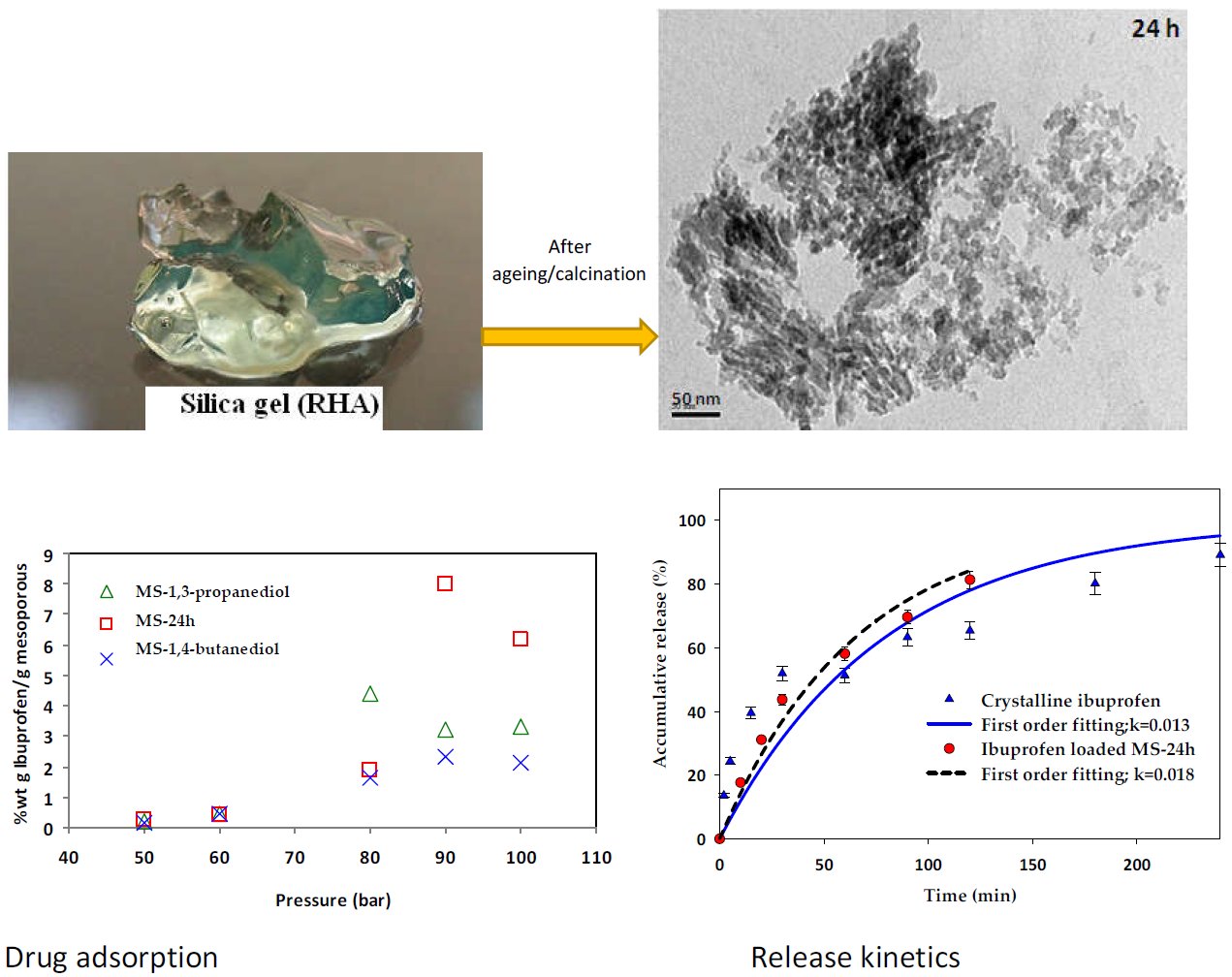This work describes the preparation of mesoporous silica by the green reaction of rice husk ash (RHA) with glycerol, followed by the modification and the potential use as a drug carrier. The reaction was carried out at 215 °C for 2 h. The solution was further hydrolyzed with deionized water and aged for various times (24, 48, 120, 360, 528 and 672 h) before calcinations at 500 oC for 24 h. Further treatment of prepared mesoporous silica was performed using trimethylmethoxysilane (TMMS) to obtain hydrophobic Mesoporous silica. For all synthesized silica, silica contents were as high as 95%wt, whereas organic residues were less than 3%wt. RHA-glycerol showed the highest specific surface area with smallest pore diameter (205.70 m2/g, 7.46 nm) when aged for 48 h. The optimal hydrolysis-ageing period of 120 h resulted in 500.7 m2/g BET surface area, 0.655 cm3/g pore volume and 5.23 nm pore diameter. The surface modification of RHA-glycerol was succeeded through the reaction with TMMS as confirmed by FTIR. Ibuprofen was selected as a model drug for the adsorption experiments. The adsorption under supercritical CO2 was carried out at isothermal temperature of 40 ˚C and 100 bar, % ibuprofen loading of TMMS modified mesoporous silica (TMMS-g-MS) was 6 times less than mesoporous silica aged for 24 h (MS-24h) due to the hydrophobic nature of modified mesoporous silica, not surface and pore characteristics. The release kinetics of ibuprofen-loaded mesoporous silicas were also investigated in vitro. The release rate of ibuprofen-loaded MS-24h was much faster than that of ibuprofen-loaded TMMS-g-MS, but comparable to the crystalline ibuprofen. The slower release rate was attributed to the diffusion control and the stability of hydrophobic nature of modified silica. This would allow the design for the controlled release drug delivery system.

